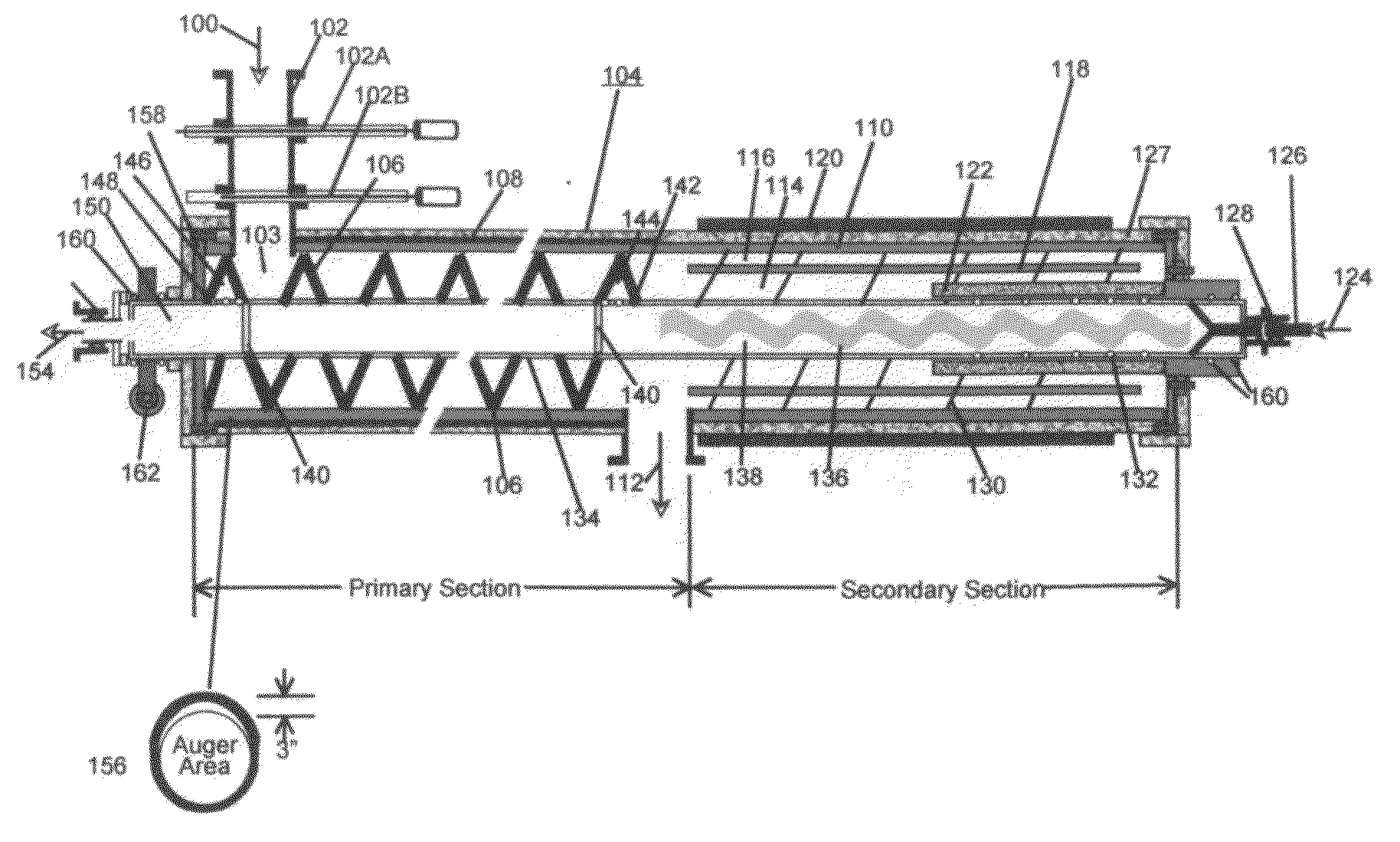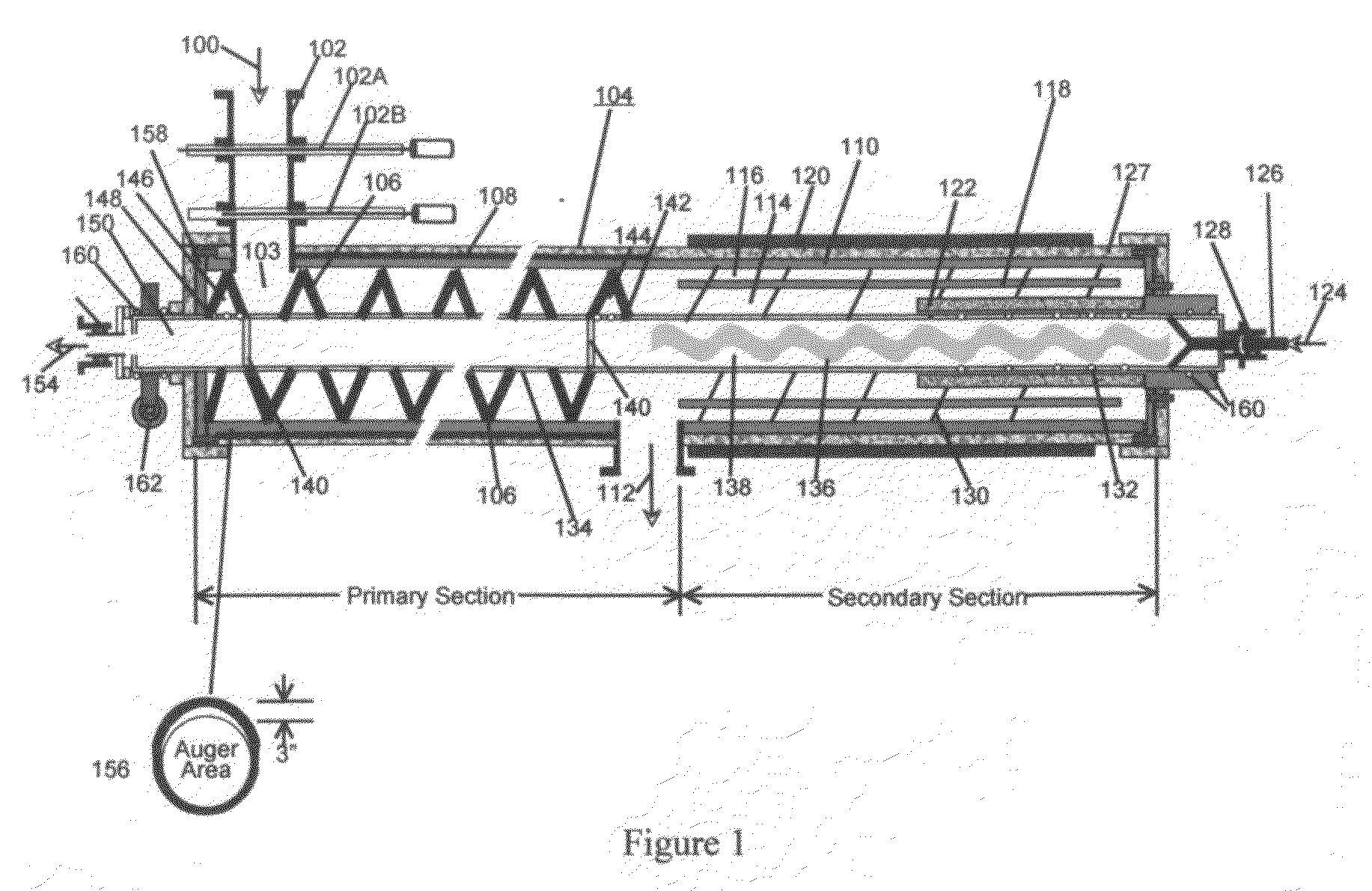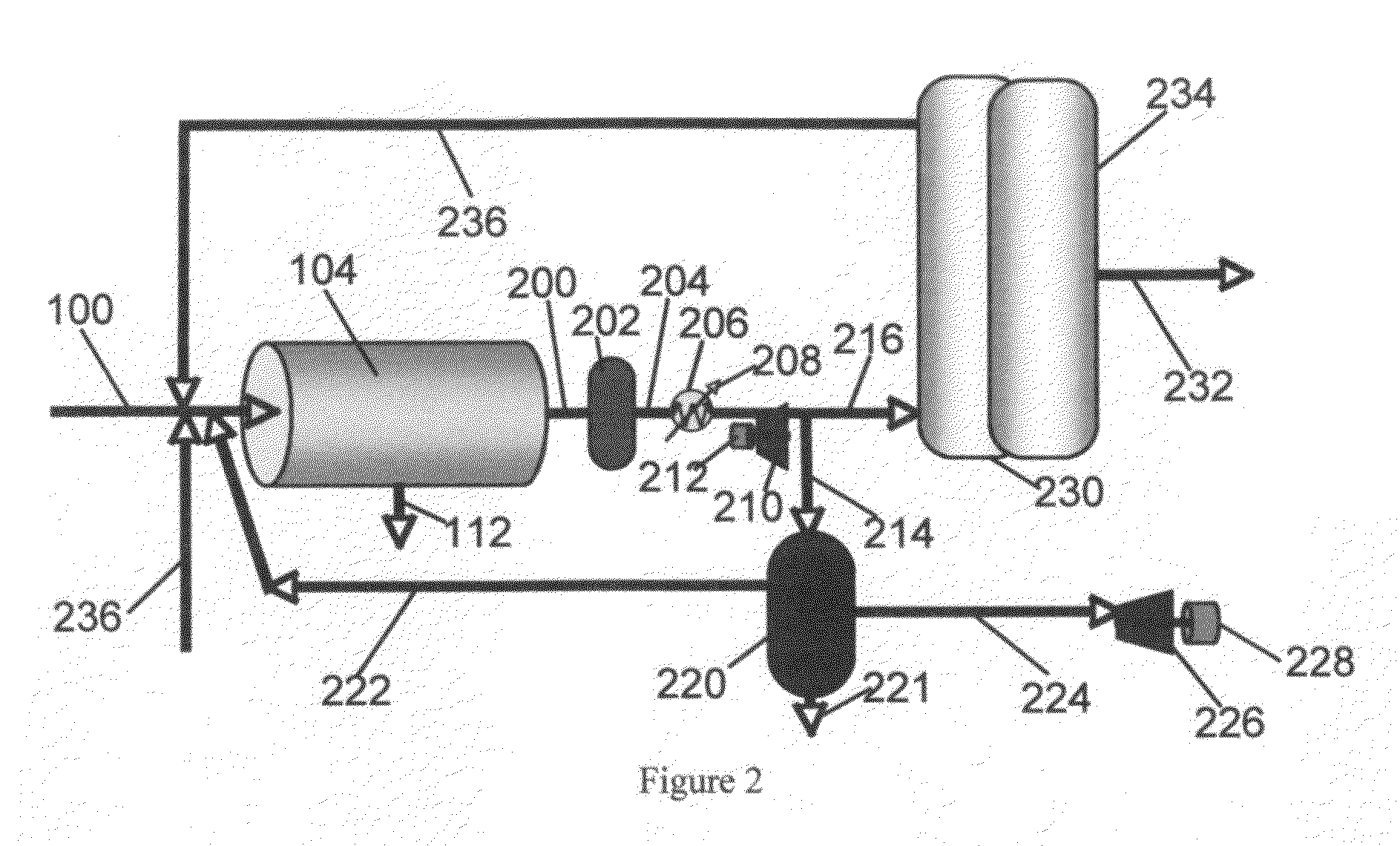Process and System for Converting Waste to Energy Without Burning
a technology of waste and energy conversion, applied in the field of process and system, can solve the problems of inefficient heat loss of process units, extreme sensitivity to various unknown chemical poisons, etc., and achieve the effect of large carbon dioxide emissions
- Summary
- Abstract
- Description
- Claims
- Application Information
AI Technical Summary
Benefits of technology
Problems solved by technology
Method used
Image
Examples
example # 1
Example #1
Stoichiometric Steam
[0037]
C1H1.67O0.47+0.53H2O→CO+1.36H2
[0038]In this case 1 kg of waste will yield 1.45 kg of syngas.
example # 2
Example #2
Superstoichiometric in CO2 and C2H4
[0039]By contrast, here is the improved reforming reaction which involves a substoichiometric amount of steam but has the light hydrocarbon Fischer-Tropsch and shift / PSA overhead represented for simplicity by C2H4, plus CO2 and H2, added.
C11H1.67O0.47+0.55C2H4+0.69H2+1.5CO2+0.04H2O→3.68CO+2.67H2 [1]
[0040]In this case, 1 kg of waste will yield 5.11 kg of syngas, which is a very significant 350% increase in the mass of syngas product formed from a given mass of waste.
[0041]This achieves the formation only of CO and H2, and thus is stoichiometric which respect to the combination of steam plus CO2 plus C2H4. Thus, less steam (i.e. sub-stoichiometric) is required and greenhouse-problematic light hydrocarbons and CO2 can be used in large amounts to achieve overall the stoichiometric conversion to syngas desired with a preferred H2 / CO ratio around 0.73. CH4, C3H8 or other light hydrocarbons are actually involved in the real world in combinatio...
example # 3
Example #3
CO2 Enriched Syngas
[0051]A further improvement in the reforming reaction which involves a substoichiometric amount of steam but has the light hydrocarbon Fischer-Tropsch and shift / PSA overhead represented for simplicity by C2H4, plus CO2 and H2, added.
C1H1.67O0.47+0.2567C2H4+0.2CO2+1.434H2O→1.123CO+0.591CO2+3.029H2
[0052]In this case, the reformation reaction is allowed to form CO2 in the syngas, such that the stoichiometric ratio of (H2−CO2) / (CO+CO2)=1.42 which is favorable for the Fischer-Tropsch reaction as follows:
1.123CO+0.591CO2+3.029H2→0.0757C20H30+0.2CO2+1.904H2O
[0053]This achieves an increase in the amount of paraffin formed and greenhouse-problematic light hydrocarbons and CO2 are entirely recycle back into the reformer, with a small portion of the water condensed as product water. Thus, the use of Fischer-Tropsch is further simplified. As before, the CH4 is produced as the major part of the waste light gases coming off the tops of the Fischer-Tropsch gravity sep...
PUM
| Property | Measurement | Unit |
|---|---|---|
| temperature | aaaaa | aaaaa |
| release energy | aaaaa | aaaaa |
| constant temperature | aaaaa | aaaaa |
Abstract
Description
Claims
Application Information
 Login to View More
Login to View More - R&D
- Intellectual Property
- Life Sciences
- Materials
- Tech Scout
- Unparalleled Data Quality
- Higher Quality Content
- 60% Fewer Hallucinations
Browse by: Latest US Patents, China's latest patents, Technical Efficacy Thesaurus, Application Domain, Technology Topic, Popular Technical Reports.
© 2025 PatSnap. All rights reserved.Legal|Privacy policy|Modern Slavery Act Transparency Statement|Sitemap|About US| Contact US: help@patsnap.com



